ESHG Young Investigator Awards
The ESHG awards prizes of EUR 500.- for outstanding research by young scientists presented as a spoken contribution at the conference. All young scientists submitting spoken presentations were encouraged to apply. The nominee is the first author (i.e. presenting author) of the presented abstract, pre- or post-doctoral (not more than 4 years after PhD).
Awards are given in the following catergories:
- ESHG Young Investigator Awards for Outstanding Science
- Isabelle Oberlé Award for Research on Genetics of Mental Retardation
- Lodewijk Sandkuijl Award for the best talk in Statistical Genetics
- Vienna Medical Academy Award for the best talk in Translational Medicine
Candidates for Young Investigator Awards
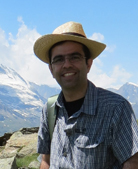 Reza Asadollahi Reza AsadollahiSchlieren-Zurich, Switzerland Talk: C03.4 The significance of small copy number variants in neuro-developmental disorders Session: C03 Intellectual disability Date: Saturday, May 31, 2014, 18:30 hrs. Date and city of birth: Yazd, Iran What is your current position? MD-PhD Fellow Why did you choose a career in genetics? Medical genetics is a remarkable field. This is due to the close interaction of medicine and science for molecular characterization of genetic disorders in order to help individual patients. What is so interesting about the research you are presenting at ESHG 2014? In a large cohort of patients with neuro-developmental disorders of unknown cause, we investigated the diagnostic relevance of genome-wide rare CNVs <500 kb and highlighted their inherent potential for discovery of new conditions. | 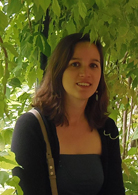 Dorien Baetens Dorien BaetensGhent, Belgium Talk: C19.4 Identification and functional characterization of ESR2, a new disease gene for 46,XY disorders of sex development (DSD). Session: C19 Internal organs Date: Tuesday, June 3, 2014, 11:00 hrs. Date and city of birth: 10/15/1989, Dendermonde, Belgium What is your current position? I am a PhD student at the Center of Medical Genetics in Ghent University Hospital. Why did you choose a career in genetics? My interest for genetics started in high school. I found it intruiging that one single change in our DNA could have such a great impact. At university, my knowledge in the field grew and so did the fascination. I learned that genetics are a rapidly changing field with new techniques and new mechanisms. Besides that, it is very motivating that genetic research is so closely linked to the clinical setting. Genetic results can improve patient care and life quality. What is so interesting about the research you are presenting at ESHG 2014? We identified a possible new disease genes for a rare disorder called Disorders of Sex Development (DSD). Despite the low prevelance of these disorders, it is important to identify the underlying molecular cause. Studying abnormal sexual development, can help us to understand pathways that are important for normal development and they can improve our knowledge about more frequent reproductive disorders such as premature ovarian failure. Identification of the molecular cause of DSD can also lead to a refined diagnose, a more accurate prognosis on fertility and improved patient management. | |
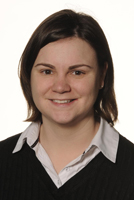 Emma Baple Emma BapleExeter, United Kingdom Talk: C15.2 Mutations in KPTN Cause Macrocephaly, Neurodevelopmental Delay, and Seizures Session: C15 Novel genes in neurogenetic disorders Date: Monday, June 2, 2014, 13:30 hrs. Date and city of birth: 5/3/1978, Epsom, United Kingdom What is your current position? Specialist trainee in Clinical Genetics and Honorary Clinical Research Fellow, University of Exeter Why did you choose a career in genetics? Genetics is probably the most rapidly advancing scientific field and thus one of the most exciting to be a part of. I have always aspired to a career as a clinical academic within genetics, helping to maximize the clinical benefits of cutting edge genetic research by bridging the gap between basic science and mainstream medicine. What is so interesting about the research you are presenting at ESHG 2014? The research findings that I will present identify KPTN as a molecule fundamental to normal human brain growth and development. This study is part of a wider community genetics project based within the Ohio Amish community. It illustrates well the significant translational benefits of such work to both the Amish community and the wider population. | 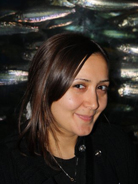 Fitnat Basmanav Fitnat BasmanavBonn, Germany Talk: C21.1 Mutations in POGLUT1, encoding protein O-glucosyltransferase 1, cause autosomal dominant Dowling-Degos disease Session: C21 Rasopathies and CDG Date: Tuesday, June 3, 2014, 11:00 hrs. Date and city of birth: 6/2/1982, Ankara, Turkey What is your current position? PhD student at the Institute of Human Genetics, University of Bonn, Germany Why did you choose a career in genetics? I decided to be a researcher in this field because I have always been fascinated by how much genetics can explain about what we are as the human kind as well as who we are as unique individuals each… What is so interesting about the research you are presenting at ESHG 2014? It is very exciting that we can explain about one third of the cases in our large cohort of Dowling-Degos disease (DDD) patients by the mutations we identified in this novel gene and that we generated information on the functional outcomes of some of these mutations. The gene we identified is from the Notch pathway and the involvement of this pathway in DDD is very intriguing and creates new opportunities of research for us. I am also delighted that we were able to define a gene-phenotype correlation in this disease for the first time which will be very useful in genetic screening and diagnostic testing. | |
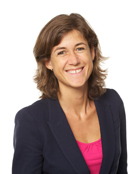 Annelien Bredenoord Annelien BredenoordUtrecht, Netherlands Talk: C22.2 Defending the child’s right to an open future concerning genetic information. Session: C22 Returning results: Ethical and legal issues (joint ESHG/EMPAG session) Date: Tuesday, June 3, 2014, 11:00 hrs. Date and city of birth: 8/1/1979, Utrecht, The Netherlands What is your current position? Associate Professor of Medical Ethics Why did you choose a career in genetics? I examine the ethical issues in novel biomedical technology. I am particularly fascinated by the rapid developments in regenerative medicine and stem cells, genetics/genomics and biobanking and the associated ethical and societal challenges: how to translate biomedical innovations from basic research into clinical care and society in an ethically sound way? I strongly believe that ethical parallel research can contribute to sustainable, ethically sound innovation in those important but often also controversial fields. What is so interesting about the research you are presenting at ESHG 2014? There has been a discussion regarding the ethical acceptability of genetic testing of children for years, resulting in a firm majority view that minors should only be tested for early onset disorders where treatment or preventive options exist. The emergence of next-generation sequencing seems to challenge this consensus. This may have serious consequences for future autonomy rights of children, their so-called ‘right to an open future’. I would like to use this presentation to discuss with the audience whether this is the direction we should aim at. | 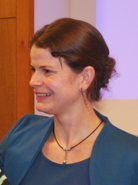 Nathalie Brison Nathalie BrisonLeuven, Belgium Talk: C01.1 Clinical implementation of non-invasive prenatal aneuploidy detection Session: C01 Prenatal testing Date: Saturday, May 31, 2014, 18:30 hrs. Date and city of birth: 7/6/1983, Kortrijk, Belgium What is your current position? I’m a postdoc in the Clinical Cytogenetics lab in the Centre for Human Genetics, Leuven (Belgium). Why did you choose a career in genetics? How can even the smallest change in DNA sequence or copy number cause disease in one person, and have almost no phenotypic effect in another? How can we accurately predict phenotypic outcome in newborns or at later stages in life? Finding clues using pre/postnatal testing on the edge of research and routine diagnostics is the challenge I am eager to pursue. The answers we can give using novel techniques in the rapidly evolving field of clinical genetics can make a huge difference, not only for Science, but for a person’s quality of life, for a couple, for a whole family. What is so interesting about the research you are presenting at ESHG 2014? The presence of cell-free fetal DNA in the maternal circulation has allowed for the development of methods for non-invasive detection of fetal chromosomal aneuploidies. Non-invasive prenatal testing (NIPT) thus avoids miscarriages due to invasive sampling of fetal material. We developed and validated an innovative, fast, cost efficient workflow and high throughput analysis pipeline for NIPT. This approach resulted in 100% specificity and sensitivity for trisomy 21 and 18 detection and has been clinically implemented and accredited. Moreover, optimization of the initial analysis pipeline seems to create opportunities to detect other chromosomal abnormalities in addition to the traditional trisomies... | |
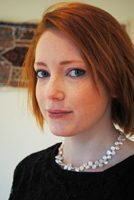 Keren Carss Keren CarssHinxton, Cambridgeshire, United Kingdom Talk: C03.2 De Novo loss of function mutations in SETD5, a novel methyltransferase gene within the 3p25 microdeletion syndrome critical region, cause intellectual disability Session: C03 Intellectual disability Date: Saturday, May 31, 2014, 18:30 hrs. Date and city of birth: 2/13/1985, Norwich, United Kingdom What is your current position? PhD student (4th year), at the Wellcome Trust Sanger Institute, Cambridge, UK. Why did you choose a career in genetics? I am interested in identifying variants that cause rare genetic diseases. This has allowed me to study the biology underlying a range of phenotypes, using both ‘wet lab’ and computational approaches. I enjoy this diversity, and am motivated by the potential application of my work to patients, who are often desperate to know the cause of their disease. What is so interesting about the research you are presenting at ESHG 2014? A high proportion of people with intellectual disability (ID) do not have likely causative variants in genes known to be involved in ID. Therefore, with each new gene discovered, the chances of a patient receiving a diagnosis increases. In this study, we find that loss of function mutations in SETD5 are a relatively common cause of ID. Additionally, our data suggest that perturbation of SETD5 function is likely to account for many of the features of 3p25 microdeletion syndrome. | 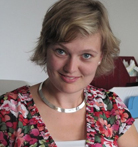 Wybrich Cnossen Wybrich CnossenNijmegen, Netherlands Talk: C19.5 LRP5 variants associated with development of polycystic kidney and liver disease Session: C19 Internal organs Date: Tuesday, June 3, 2014, 11:00 hrs. Date and city of birth: 5/26/1985 What is your current position? I am working as PhD student with a focus on polycystic liver disease. My project is a collaboration between the laboratory of the Department Gastroenterology and Hepatology of professor Joost Drenth, and the Genomic Disorders Group of professor Joris Veltman at the Radboud university medical center. We apply different strategies to identify novel genes associated with cystogenesis and perform functional analyses. Why did you choose a career in genetics? Rare liver disorders have my special interest. Polycystic liver disease is one of those. Many genetic factors related to (progressive) development of multiple cysts are yet unknown. Secondly, I really enjoy performing research in collaboration with colleagues from different disciplines such as technicians, biologists and bioinformatics. Sharing knowledge brings us together to the next level. What is so interesting about the research you are presenting at ESHG 2014? Isolated polycystic liver disease (PCLD) and autosomal dominant polycystic liver disease (ADPKD) are the 2 major polycystic liver diseases. The genetic cause is unexplained in the majority (~80%) of PCLD patients. Recently, we identified 4 unique variants on the LRP5 gene in PCLD families by exome sequencing (PNAS 2014 March 24). Almost all ADPKD patients harbor a PKD1 or PKD2 mutation, but some cases are still unlinked. Here, we present unique and rare LRP5 variants associated with ADPKD. | |
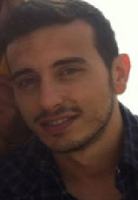 Francesco Cucco Francesco CuccoPisa, Italy Talk: C08.1 Smc1a cohesin gene mutations in colorectal precancerous lesions Session: C08 Cancer genetics Date: Sunday, June 1, 2014, 13:30 hrs. Date and city of birth: 7/9/1984, San Benedetto del Tronto (AP), Italy What is your current position? PhD student Why did you choose a career in genetics? During my undergraduated studies I have always been interested in genetics. I attended at several curricular and extra-curricular genetics courses and seminars. In particular I have always been fascinated by how DNA variants can lead to genetic disorders. What is so interesting about the research you are presenting at ESHG 2014? The implication of cohesin and its alterations in early steps of colorectal cancer. We also defined the role of cohesin mutations in the tumorigenesis. | 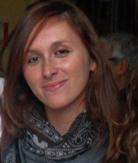 Elisa De Franco Elisa De FrancoExeter, United Kingdom Talk: C17.5 Genetic testing leads clinical care in neonatal diabetes: a new paradigm Session: C17 Metabolic and mitochondrial disorders Date: Monday, June 2, 2014, 13:30 hrs. Date and city of birth: 12/24/1986, Bra, Italy What is your current position? Research Associate Why did you choose a career in genetics? I chose a career in genetics as I am convinced that the DNA holds most of the answers to unsolved questions in human biology and I strongly believe genetics will soon make an impact on everybody’s lives. What is so interesting about the research you are presenting at ESHG 2014? We studied the impact of genetic testing in the world largest cohort of neonatal diabetes patients (n=1020). Our results show that next-generation sequencing has changed clinical practice: now the genetic result guides clinicians’ choices on patients’ treatment and clinical management. | |
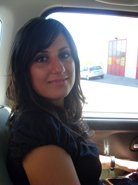 Pasquelena De Nittis Pasquelena De NittisSan Giovanni Rotondo, Italy Talk: C16.6 In silico and functional characterization of KMT2D/MLL2 missense mutations as causative in Kabuki syndrome Session: C16 Genes and development 2 Date: Monday, June 2, 2014, 13:30 hrs. Date and city of birth: 7/10/1988, San Giovanni Rotondo (FG), Italy What is your current position? I am currently a postgraduate trainees at the Medical Genetics Unit of “Casa Sollievo della Sofferenza” Hospital (FG, Italy). Why did you choose a career in genetics? I think that it is so fascinating to have curiosity in the genetic basis of disease, being genetics the basis of biological systems and to link interests in molecular mechanisms with clinical implications. The up-to-date knowledges of cellular and developmental systems raises the possibility to study pathogenesis of diverse genetic disease, as well as to generate cells of different lineages for future personalized therapies, using patient-specific input cells. I think that it is motivating for my future career. What is so interesting about the research you are presenting at ESHG 2014? Kabuki syndrome is a rare syndrome, caused mainly by mutations in KMT2D and UTX genes. Among the KMT2D mutations we identified some missense variants. In this work we propose to estimate the real deleterious effect of KMT2D missense variants by an analysis with bioinformatic tools and functional assays, being the final effect of mutation in causative gene, a main issue in diagnostic counseling. | 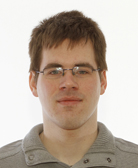 Patrick Deelen Patrick DeelenGroningen, Netherlands Talk: C06.1 Resolving variants of unknown significance through reanalysis of 4,978 public RNA-seq samples Session: C06 Functional and computational genomics Date: Saturday, May 31, 2014, 18:30 hrs. Date and city of birth: 5/30/1986, Rotterdam, The Netherlands What is your current position? I’m a bioinformatics PhD student at the Genomics Coordination Center of the Genetics Department at the University Medical Center Groningen, the Netherlands. Why did you choose a career in genetics? The field of genetics allows me to put my curiosity, interest in genetics and statistical and programming skills to good use. I love tackling complex problems and dealing with the increasing amounts of datasets. I hope that the knowledge I acquire will be useful for gaining insight in the understanding of the genetic basis of diseases. What is so interesting about the research you are presenting at ESHG 2014? For many mutations it remains unclear how they cause disease. I developed an algorithm that can integrate and extract genotypes from >1,000 public RNA-seq experiments, which enables allele specific expression analysis. I found that many rare mutations affect gene expression levels, illustrating the power of mining public RNA-seq data. | |
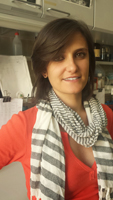 Giuseppina Di Fruscio Giuseppina Di FruscioNaples, Italy Talk: C07.1 LysoPlex: an efficient strategy to study the role of lysosomal-autophagic-endocytic pathway Session: C07 Implementation of NGS in diagnostics Date: Sunday, June 1, 2014, 13:30 hrs. Date and city of birth: 6/13/1987, Naples, Italy What is your current position? I am a PhD student at Professor Nigro’s laboratory and I am currently working on the molecular characterization of lysosomal diseases and disorders related to autophagy. In particular, I have contributed to the development of LysoPlex, a novel targeted NGS tool investigating more than 800 genes selected by computational approaches and involved in the lysosomal-autophagic pathway. Why did you choose a career in genetics? I chose to attend the biotechnology faculty driven by a strong curiosity about the mechanisms causing genetic diseases and, in particular, responsible for the relationship between the genotype and phenotype. I find it very interesting to observe how any little change in the DNA code can lead to a pathology in an organism. What is so interesting about the research you are presenting at ESHG 2014? LysoPlex is the first platform able to investigate a high number of genes predicted to be related to the lysosomal-autophagic pathway. Its widespread use could allow us to uncover the role of these cellular functions in health and disease. | Anthony Drecourt Paris, France Talk: C15.3 REPS1 is a novel gene of Neurodegeneration with Brain Iron Accumulation Session: C15 Novel genes in neurogenetic disorders Date: Monday, June 2, 2014, 13:30 hrs. Date and city of birth: 5/18/1987, Conflans sainte Honorine, France What is your current position? I’m Ph.D student at the IMAGINE Institut, Paris, France Why did you choose a career in genetics? I like to study life mecanisms and especially the link between genetics and desease. But the most important is that my work can help people. What is so interesting about the research you are presenting at ESHG 2014? Using Exome sequencing od DNA from patients with NBIA (Neurodegeneration with Brain Iron Accumilation)we identified mutations in a new gene linked to this disease. These patients are caracterised by iron accumulation in the brain and in skin fibroblasts. Currently, we are trying to dissect the molecular mechanism behind iron accumulation in the patients. By studying this we hope to identify a drug target that will allow us to limit the progression of the disease. | |
| Daniel Gaston Halifax, Canada Talk: C08.3 Germline mutations in MAP3K6 predispose to gastric cancer Session: C08 Cancer genetics Date: Sunday, June 1, 2014, 13:30 hrs. | 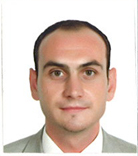 Xavier Gerard Xavier GerardParis, France Talk: C12.4 AON intravitreal injections to manipulate splicing in retinal cells Session: C12 Sensory disorders Date: Sunday, June 1, 2014, 13:30 hrs. Date and city of birth: 1/1/1984, Valence, France What is your current position? Postdoctoral fellowship Why did you choose a career in genetics? To develop therapeutic approaches What is so interesting about the research you are presenting at ESHG 2014? The manipulation of mRNA splicing in retinal cells after an antisense oligonucleotides intravitreal injection. | |
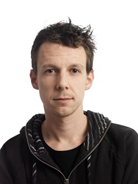 Christian Gilissen Christian GilissenNijmegen, Netherlands Talk: PL2.6 Genome sequencing identifies major causes of severe intellectual disability Session: PL2 What’s new? Highlights Session Date: Saturday, May 31, 2014, 4:30:00 PM hrs. Date and city of birth: 4/13/1980, Geleen, The Netherlands What is your current position? I’m a postdocteral researcher in bioinformatics Why did you choose a career in genetics? My first experience with genetics was by accident after losing a coin-toss for an internship assignment with a colleague. However, after my first experiences I got very excited about my field because there were so many new fundamental things to discover, while at the same time my work really affected people’s lives and helped patients. What is so interesting about the research you are presenting at ESHG 2014? This research presents the first real application of Whole Genome Sequencing (WGS) in the clinic. We find that de novo mutations are the major cause of severe intellectual disability and that by using WGS we can identify all different types of genomic variation in a single test thereby providing a diagnosis for the majority of patients. | 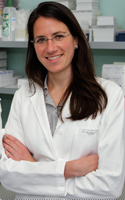 Giorgia Girotto Giorgia GirottoTrieste, Italy Talk: C12.2 New Hereditary hearing loss (HHL) genes/mutations identified by High throughput sequencing and genotyping in the Italian and Qatari populations. Session: C12 Sensory disorders Date: Sunday, June 1, 2014, 13:30 hrs. Date and city of birth: Venice, Italy What is your current position? Postdoctoral Research Fellow, PhD, University of Trieste/IRCCS Burlo Garofolo, Italy Why did you choose a career in genetics? Since I started my thesis in Genetics, I had no idea where the road would take me. Then, I have been intrigued by the complex mechanism of human body that are driven by genetics rules What is so interesting about the research you are presenting at ESHG 2014? Hearing loss is the most frequent sensory defect affecting humans and according to the World Health Organization, worldwide, more than 250 million of people have disabling hearing loss. Considering the large number of people affected, the limited potential of available therapies and the vast genetic heterogeneity, there is an unmet need to discover new genes/alleles involved and to develop new preventive strategies and therapeutic approaches. Thanks to our multistep strategy and the use of high-throughput technologies, we were able to characterize at molecular level several families affected by Hereditary Hearing Loss identifying also new genes. This means a substantial increase in our understanding of the physiology of hearing and will be the pre-requisite for additional functional studies as well as for putative gene-specific therapeutic approaches. Furthermore, the definition of accurate molecular epidemiology data, is an essential step towards the development of diagnostic algorithms and protocols | |
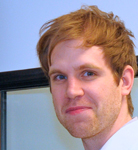 Emil Gustavsson Emil GustavssonVancouver, Canada Talk: C09.2 Exome sequencing of familial parkinsonism in Scandinavia Session: C09 Common neurological disease Date: Sunday, June 1, 2014, 13:30 hrs. Date and city of birth: 11/8/1981, Stockholm, Sweden What is your current position? PhD student at the Centre for Applied Neurogenetics, University of British Columbia and Norwegian University of Science and Technology Why did you choose a career in genetics? Studying neuroscience of disease made me realize that we work with the consequences of disease whereas genetics might answer how and why the pathogenesis may arise and propagate within families. What is so interesting about the research you are presenting at ESHG 2014? Working within a homogeneous population where environmental factors and clinical history has been documented over a long period of time makes it powerful to investigate the genetic contribution of disease. Using exome sequencing within families in close relation to the neurologists is a fast and powerful method to understand the molecular ethiology of parkinsonism in these families. | 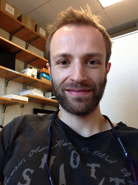 Michael Holmes Michael HolmesPhiladelphia, United States Talk: C04.6 Causal relationship of body mass index with cardiometabolic traits and events: a Mendelian randomization analysis Session: C04 Cardiovascular disorders Date: Saturday, May 31, 2014, 18:30 hrs. Date and city of birth: 6/23/1978, Glasgow, United Kingdom What is your current position? Assistant Professor, Department of Surgery, Perelman School of Medicine, University of Pennsylvania, USA Why did you choose a career in genetics? My interest lies in exploiting genomic data to make inferences about causal mechanisms in disease aetiology What is so interesting about the research you are presenting at ESHG 2014? I will present findings from a Mendelian randomization analysis of body mass index on cardiometabolic traits and events. The findings show that body mass index has wide-ranging causal effects on multiple traits that are harmful to cardiovascular health. Since body mass index is a modifiable trait, these findings highlight the importance of weight management for optimizing cardiovascular health at the population level. | |
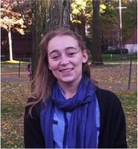 Laura Huckins Laura HuckinsHinxton, United Kingdom Talk: C11.2 Polygenic risk score analysis shows shared genetic aetiology between AN and five other psychiatric disorders Session: C11 Statistical genetics Date: Sunday, June 1, 2014, 13:30 hrs. Date and city of birth: 3/21/1989, Oxford, UK What is your current position? PhD Student, Wellcome Trust Sanger Institute Why did you choose a career in genetics? I chose a career in genetics because I wanted to understand the role played by genetics in our thoughts and emotions. My PhD focuses on the genetics and functional mechanisms of eating disorders, and involves not only statistical genetics, and teasing out polygenic or epigenetic aetilogy, but also the study of mouse behaviour and the functional effect of putative AN genes. I am always fascinated by the interplay of genetics and societal or environmental factors. What is so interesting about the research you are presenting at ESHG 2014? Anorexia Nervosa (AN) has the highest mortality rate of any psychiatric disorder, yet the disorder is poorly understood, and no effective treatment exists. This research will be the first time a polygenic aetiology has been shown for AN, and the first evidence of cross-disorder genetic architecture between AN and other psychiatric disorders. This research will be a first step to explaining the biological mechanisms underlying AN. | 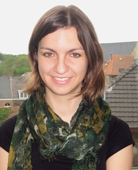 Louiza Kalokairinou Louiza KalokairinouLeuven, Belgium Talk: C22.6 Current Developments in the Regulation of Direct-to-Consumer Genetic Testing in Europe Session: C22 Returning results: Ethical and legal issues (joint ESHG/EMPAG session) Date: , 11:00 hrs. Date and city of birth: 8/17/1987, Heraklion, Greece What is your current position? I am a PhD researcher at KU leuven in Belgium. My project focuses on legal, ethical and social aspects of direct-to-consumer genetic testing. Why did you choose a career in genetics? Genetics is a fast growing field which unravels great possibilities for prevention and treatment of diseases, but at the same time may present numerous ethical and legal implications,as well as policy challenges. I am particularly interested in exploring how innovation and the development of personalized medicine may be promoted without compromising public health and fundamental rights. What is so interesting about the research you are presenting at ESHG 2014? My research aims to present how the proposed Regulation on in vitro diagnostic medical devices may affect direct-to-consumer genetic testing in Europe. The proposed Regulation, if eventually adopted, will impact significantly, among others, the pre-market assessment of genetic tests and render illegal their provision and marketing directly to consumers. These amendments raise questions regarding the appropriate degree of genetic testing regulation. | |
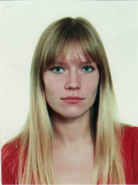 Mariann Kasela Mariann KaselaHelsinki, Finland Talk: C08.6 Functional analysis of mismatch repair gene variants of uncertain significance and their possible contribution to Lynch syndrome. Session: C08 Cancer genetics Date: Sunday, June 1, 2014, 13:30 hrs. Date and city of birth: 10/29/1986, Tallinn, Estonia What is your current position? Doctoral student at University of Helsinki Why did you choose a career in genetics? Since childhood I have been interested in nature and animals. My mother and grandmother are both doctors. I guess since I grew up in this environment it influenced me. In addition I had a really interesting biology teacher who first introduced the field of genetics in the ninth grade. Since then I knew I wanted to study genetics. And I have not regretted my choice. What is so interesting about the research you are presenting at ESHG 2014? The study regarding Lynch syndrome is interesting to me because there are a lot of people all around the world who suffer from this syndrome. I personally feel that our research has a great impact on discovering putative Lynch syndrome variants and help to develop more transparent and efficient way to determine the patients and give them accurate care. | 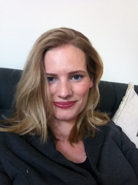 Sietske Kevelam Sietske KevelamAmsterdam, Netherlands Talk: C15.6 Novel (ovario)leukodystrophy related to AARS2 mutations Session: C15 Novel genes in neurogenetic disorders Date: Monday, June 2, 2014, 13:30 hrs. Date and city of birth: 7/30/1985, Nijmegen, The Netherlands What is your current position? I am currently a PhD student working at the departments of Child Neurology and Medical Genome Analysis. Why did you choose a career in genetics? During medical school I became fascinated by the contribution of genetics in health and disease. It is exciting to learn more about the underlying genetic mechanisms of diseases and the implications of these insights for human physiology. With the rapidly evolving new techniques we can and will decipher more and more disorders, which will give patients and their families answers and help them cope with their diseases. What is so interesting about the research you are presenting at ESHG 2014? My focus is on exceedingly rare inherited progressive encephalopathies. These patients present with specific patterns of MRI abnormalities. We use such MRI-patterns to form homogeneous groups of patients, which helps tremendously in finding the common mutated gene by exome sequencing. In this study we identified mutations in AARS2 in patients with specific abnormalities of the left-right connections in the corpus callosum and descendings tracts of the brain, and in females ovarian failure. | |
| Anat Kreimer New York, United States Talk: C11.5 Co-regulated transcripts associated to cooperating eSNPs define bi-fan motifs in human gene networks Session: C11 Statistical genetics Date: Sunday, June 1, 2014, 13:30 hrs. | 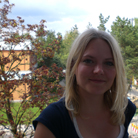 Laura Kremer Laura KremerNeuherberg, Germany Talk: C17.2 Decoding Mitochondrial Disorders using Exome Sequencing Session: C17 Metabolic and mitochondrial disorders Date: Monday, June 2, 2014, 13:30 hrs. Date and city of birth: 9/5/1986, Rodalben, Germany What is your current position? Second year PhD student at Institute of Human Genetics at the Helmholtz Zentrum München Why did you choose a career in genetics? The identification of disease causing mutation eases the understanding of the pathological phenotype and holds promise for the developement of therapeutic approaches. Therefore I chose to investigate the genetic causes of mitochondrial disorders, which for the most part still lack treatement options. What is so interesting about the research you are presenting at ESHG 2014? Mitochondrial disorders are genetically and clinically extremely heterogeneous making proper diagnosis very challenging. Exome sequencing has now revolutionized the field and proven as a powerful and reliable tool to identify disease causing mutations and helping to understand mitochondrial physiology. | |
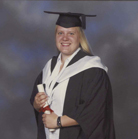 Christina Lissewski Christina LissewskiMagdeburg, Germany Talk: C21.2 The phenotypic spectrum of SHOC2 c.4A>G (p.Ser2Gly) Session: C21 Rasopathies and CDG Date: Tuesday, June 3, 2014, 11:00 hrs. Date and city of birth: 4/5/1983, Wilhelmshaven, Germany What is your current position? I am a PhD student in the Institute of Human Genetics in Magdeburg, Germany. Why did you choose a career in genetics? I already knew in school that I wanted to be a scientist. As an AuPair I watched 2 boys and one of them has Noonan syndrome. This made me pick a college class in Genetics. I liked it and decided to study Biology and get my Masters in Genetics. Being able to write my dissertation on Noonan syndrome and related disorders is an added bonus. What is so interesting about the research you are presenting at ESHG 2014? We were able to collect clinical information from a large number of patients with Noonan-like syndrome and a specific mutation (SHOC2 p.S2G). This should give patients and their families a better idea on prognosis and possible rare complictions. | 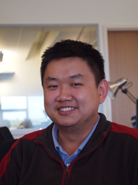 Jimmy Liu Jimmy LiuHinxton, United Kingdom Talk: C14.6 Transethnic association study of IBD identifies novel risk loci and shows pervasive sharing of genetic risk factors across populations Session: C14 Genetics of complex traits Date: Monday, June 2, 2014, 13:30 hrs. Date and city of birth: 3/19/1986, Harbin, China What is your current position? PhD student at the Wellcome Trust Sanger Institute Why did you choose a career in genetics? The analysis of modern genomic datasets requires a unique blend of biology, statistics, mathematics and computer science. I am interested in how these come together to help us better understand disease, and ultimately translation into more effective therapies. What is so interesting about the research you are presenting at ESHG 2014? Fewer than 5% of genetic association studies have been performed with non-European samples. Our work on the genetics of inflammatory bowel disease (IBD) represents the largest of its type in South and East Asian populations. In addition to discovering risk loci, our study for the first time enables well-powered unravelling of both the similarities and differences in the genetic architecture of IBD between European and Asian populations. | |
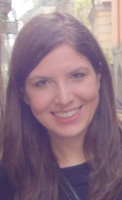 Maria Nicla Loviglio Maria Nicla LoviglioLausanne, Switzerland Talk: C06.4 Chromatin loops and CNVs: the complex spatial organization of the 16p11.2 locus Session: C06 Functional and computational genomics Date: Saturday, May 31, 2014, 6:30 hrs. Date and city of birth: 3/29/1986, Altamura(Bari)-Italy What is your current position? PhD student at CIG - University of Lausanne Why did you choose a career in genetics? I choose a career in genetics because I love the idea of getting a deeper understanding about all the elements concurring in the definition of the phenotype. Furthermore, I strongly believe that advancements in the medical genetics field can have a great impact on people’s life. What is so interesting about the research you are presenting at ESHG 2014? I think that the study of chromatin organization provides an additional layer of complexity to the understanding of the complex mechanisms regulating gene expression, likely contributing to disease phenotype. | 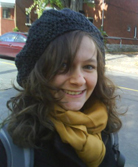 Danielle Lynch Danielle LynchCalgary, Canada Talk: PL2.2 Disrupted auto-regulation of SNRPB causes cerebro-costo-mandibular syndrome Session: PL2 What’s new? Highlights Session Date: Saturday, May 31, 2014, 4:30:00 PM hrs. Date and city of birth: 9/23/1989, Vancouver, Canada What is your current position? PhD student in at the University of Calgary Why did you choose a career in genetics? Working in genetics allows me to satisfy both my love of molecular biology and my curiosity about what we are made of as humans. What is so interesting about the research you are presenting at ESHG 2014? This research reveals the long sought-after gene causing cerebro-costo-mandibular syndrome (CCMS). Our discovery that CCMS is caused by mutatations in a core spliceosomal component invites questions on the likely very nuanced role of splicing in development. We also provide the first example of de-regulation of spliceosome-mediated mRNA decay in disease. | |
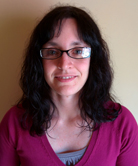 Pamela Magini Pamela MaginiBologna, Italy Talk: C21.4 A mutation in PAK3 with a dual molecular effect deregulates the RAS/MAPK pathway and drives an X-linked syndromic phenotype Session: C21 Rasopathies and CDG Date: Tuesday, June 3, 2014, 11:00 hrs. Date and city of birth: 1/26/1982, Mondavio (Pesaro-Urbino), Italy What is your current position? Postdoctoral fellow Why did you choose a career in genetics? I chose genetics as a natural continuation of my academic studies in biology. After my first stage in a genetic laboratory I was sure that this would have been my career: what could be more fascinating than a code of only four bases that regulates the life of entire organisms? What is so interesting about the research you are presenting at ESHG 2014? The most interesting finding of our research is that we concretely demonstrated that a single mutation in a gene had a double functional effect, depriving the encoded protein of its biological activity and conferring it an uncontrolled dominant-negative function. This combination caused a more severe phenotype compared to simple loss-of-function mutations in the same gene, suggesting that what is generally defined as “variable expressivity” could have a molecular explanation that should be investigated. | 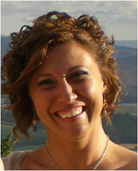 Maria Antonietta Mencarelli Maria Antonietta MencarelliSiena, Italy Talk: C19.6 Digenic model in Alport syndrome Session: C19 Internal organs Date: Tuesday, June 3, 2014, 11:00 hrs. Date and city of birth: 11/8/1979, Chianciano Terme, Italy What is your current position? PhD Student and Consultant Why did you choose a career in genetics? Medical genetics offers me the opportunity to work on a constantly evolving matter that ranges a broad spectrum of medical disciplines from Pediatrics to Oncology going through Neurology and Prenatal Diagnosis. What is so interesting about the research you are presenting at ESHG 2014? The work that I present identifies a new mechanism of inheritance in a well known Mendelian disease, possibly leading to the characterization of potential modifying factors that can have relevant implications in genetic counselling. | |
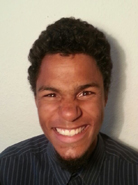 Martin Mensah Martin MensahBerlin, Germany Talk: C20.4 Pseudoautosomal region 1 length polymorphism in the human population Session: C20 Basic mechanisms in genetics Date: Tuesday, June 3, 2014, 11:00 hrs. Date and city of birth: 5/25/1988, Berlin, Germany What is your current position? I am a final year medical student at the Charité Berlin writing my theseis in genetics in a corporation with KU Leuven. Why did you choose a career in genetics? I have already been fascinated by human biology and especially genetics during my highschool time. That encouraged me to study medicine with the aim of becoming a genetecist. What is so interesting about the research you are presenting at ESHG 2014? We have found the first polymorphism of PAR1’s length, which had apparently been formed by NAHR. This is a totally new aspect of sex chromosomal evolution. Interestingly, this NAHR had been mediated by a homology of just a few hundred bp length. | 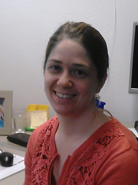 Elke Mersy Elke MersyMaastricht, Netherlands Talk: C01.5 Scenarios for implementation of noninvasive prenatal testing (NIPT) for Down syndrome in a national health care system Session: C01 Prenatal testing Date: Saturday, May 31, 2014, 6:30 hrs. Date and city of birth: 8/18/1986, Kortrijk, Belgium What is your current position? Currently, I am a medical doctor working as a full time researcher on new developments in non-invasive prenatal testing at the Clinical Genetics department of the Maastricht University Medical Center in the Netherlands. Why did you choose a career in genetics? I have always been interested in the fundamentals of genetics and the technical developments. Most importantly, I am interested in the translation of these technologies for the benefit of patients. What is so interesting about the research you are presenting at ESHG 2014? Addition of non-invasive prenatal testing (NIPT) into the national Down syndrome screening programs will result in important advantages for pregnant women. However, as one might suspect, this is a complicated process and requires decision-making about the timing of the test and the combination with other tests. To provide an overview of the pros and cons of different NIPT implementation strategies, we combined a decision-analytic model and an ethical exploration. | |
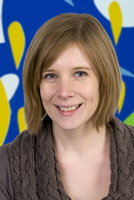 Marije Meuwissen Marije MeuwissenRotterdam, Netherlands Talk: C15.4 Interferon type 1 response regulator USP18 is mutated in severe pseudo-TORCH syndrome Session: C15 Novel genes in neurogenetic disorders Date: Monday, June 2, 2014, 13:30 hrs. Date and city of birth: 7/16/1980, Leidschendam, The Netherlands What is your current position? After finishing my training as a clinical geneticist and my PhD at the Erasmus University Medical Center Rotterdam, I am currently working as a Clinical Geneticist at the University Hospital Brussels. Why did you choose a career in genetics? I love the combination of the technical, molecular part and the communicative aspects of the field, together with the challenge of fitting different pieces of a puzzle. What is so interesting about the research you are presenting at ESHG 2014? We identified a novel autosomal recessive cause of “pseudo-TORCH” syndrome with in addition severe cerebral hemorrhage and a dramatic course in the affected patients. We identified USP18 mutations, leading to an upregulation of the IFN type I signalling. Although this is also observed secondary to viral infections and Aicardi- Goutières syndrome, this is the first time that “pseudo-TORCH” and this signalling pathway are directly linked. | 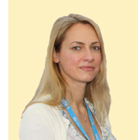 Dimitra Micha Dimitra MichaAmsterdam, Netherlands Talk: C10.1 PLS3 mutations in X-linked osteoporosis and fractures: unraveling a new bone regulatory pathway Session: C10 Bone and skeletal patterning Date: Sunday, June 1, 2014, 13:30 hrs. Date and city of birth: 6/1/1905, Stockholm, Sweden What is your current position? Post doc in the Clinical Genetics department of the Vrije Universiteit medical center in Amsterdam Netherlands. Why did you choose a career in genetics? I believe genetics holds the key for the cure of many diseases. Understanding disease genetics is a very important step towards the development of new treatment approaches. What is so interesting about the research you are presenting at ESHG 2014? We discovered PLS3 mutations to be a monogenetic cause of X-linked recessive osteoporosis. A rare PLS3 variant associated with osteoporosis in the general population. This provides a completely novel bone regulatory pathway responsible for the development of this disease which will open new therapeutic avenues in the future. | |
 Andréanne Morin Andréanne MorinMontréal, Canada Talk: C14.4 ImmunoSeq: Discovery of novel rare variants implicated in autoimmune and inflammatory diseases by targeting regulatory regions in immune cells Session: C14 Genetics of complex traits Date: Monday, June 2, 2014, 13:30 hrs. Date and city of birth: 1/27/1988, Chicoutimi, Québec, Canada What is your current position? I am a PhD candidate in the Human Genetics department, McGill University, Montreal, Canada. I am under the co-supervision of Dr. Tomi Pastinen (McGill University, Montreal) and Dr. Catherine Laprise (Université du Québec à Chicoutimi, Chicoutimi) Why did you choose a career in genetics? Science and research in health have always interested and intrigue me. I met researchers at a young age and found what they were doing fascinating. From that point, my interest for research in health just kept growing. The incredible progress of genetics and genomics in the past few years and the high discovery potential really attracted me. I am working on the genomics of complex traits, more precisely on the impact of rare variants in the development of autoimmune and inflammatory diseases. Working in a field which is still unexplored and where there is still so much to discover and understand is very motivating for me to be part of. What is so interesting about the research you are presenting at ESHG 2014? My project is the design of the ImmunoSeq, a novel way to interrogate rare non-coding variants. By targeting and sequencing non-coding regulatory regions of immune cells, we think that we can find potentially causal variants for different autoimmune and inflammatory diseases in a cost effective manner. Preliminary results show the potential impact of rare variants on gene expression regulation. This unique approach will potentially help to better identify relevant disease mechanisms of autoimmune and inflammatory complex trait. | 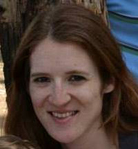 Danit Oz-Levi Danit Oz-LeviRehovot, Israel Talk: C17.4 Deletion of a distant-acting enhancer near C16ORF91 underlies recessive congenital diarrhea Session: C17 Metabolic and mitochondrial disorders Date: Monday, June 2, 2014, 13:30 hrs. Date and city of birth: 9/14/1983, Kfar Saba Israel What is your current position? PhD student in genetics Why did you choose a career in genetics? I wanted to study genetic diseases in order to be able to help decipher undiagnosed conditions that might provide prenatal screening options for families seeking such services. It is of critical importance to learn the mechanisms of rare diseases in order to improve our understanding of drug therapies and treatment, especially in cases where there are not too many patients with a particular disease, a situation that leaves them bereft of answers. What is so interesting about the research you are presenting at ESHG 2014? We have identified the disease casuing variant for a rare form of congenital diarrhea in an intergenic region using exome sequencing alone. The sophisticated bioinformatic analysis not only led to the identification of a deleted intergenic region, but also defined it as a putative enhancer, that when deletd is causing the disease. | |
| Francesca Pantaleoni Roma, Italy Talk: C21.5 Activating mutations in RRAS underlie a phenotype within the RASopathy spectrum and contribute to leukaemogenesis Session: C21 Rasopathies and CDG Date: Tuesday, June 3, 2014, 11:00 hrs. | 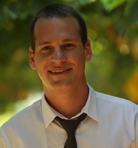 Yonatan Perez Yonatan PerezBeer Sheva, Israel Talk: C12.6 Isolated foveal hypoplasia with secondary nystagmus and low vision is associated with a homozygous SLC38A8 mutation Session: C12 Sensory disorders Date: Sunday, June 1, 2014, 13:30 hrs. Date and city of birth: 9/23/1983, Beer-Sheva, Israel What is your current position? PhD student, The Morris Khan Laboratory of Human Genetics at the National Institute of Biotechnology in the Negev, Department of Genetics, Faculty of Health Sciences, Ben-Gurion University, Beer Sheva, Israel. Why did you choose a career in genetics? Genetics in general has always fascinated me because of its complexity, beauty and elegance. I still find the basic concepts of phenotypic information transferred from generation to generation via a basic molecular structure fascinating. My passion for the field of human genetics in particular is driven by my curiosity and interest in medical sciences and because it allows me to be in a unique position, having the great privilege of influencing people’s quality of life. What is so interesting about the research you are presenting at ESHG 2014? My research enabled insights into normal eye development, as well as identification of the molecular basis of a human disease. I have demonstrated that a homozygous mutation in SLC38A8 causes isolated hypoplasia of the fovea, a pit in the retina that is essential for sharp vision. Interestingly, I have shown that SLC38A8 resides within the nuclear membrane, suggesting a role different than that predicted for similar putative amino acid transporters. | |
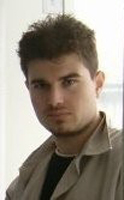 Slavil Peykov Slavil PeykovHeidelberg, Germany Talk: C09.1 Functional analysis of SHANK2 mutations identified in schizophrenia patients Session: C09 Common neurological disease Date: Sunday, June 1, 2014, 13:30 hrs. Date and city of birth: 9/30/1984, Sofia, Bulgaria What is your current position? PhD student at the Institute of Human Genetics (Heidelberg) Why did you choose a career in genetics? I always wanted to learn how the information stored in our genomes can be read, understood and finally re-written in a ways that answer questions about mechanisms of different disorders and potentially fix different mistakes in our DNA. What is so interesting about the research you are presenting at ESHG 2014? This is the first report showing an association of the SHANK2 gene to schizophrenia. Our information completes the story of the SHANK gene family and suggests that all three members are playing role in both major neurological disorders ASD and SCZ. | 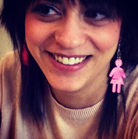 Aldesia Provenzano Aldesia ProvenzanoFirenze, Italy Talk: C02.2 High throughput sequencing in sporadic forms of steroid-resistant nephrotic syndrome: heterogeneous genetic alterations can predict resistance to treatments Session: C02 Personalized medicine and pharmacogenomics Date: Saturday, May 31, 2014, 6:30 hrs. Date and city of birth: 8/11/1982, Cosenza Italy What is your current position? PhD student Why did you choose a career in genetics? Genetics has always fascinated me because is like explore the universe of diseases with a magnifying glass. I was always interested to search the cause of biological processes behind human diseases and genetics gives the opportunity to find novel genes or mechanisms to improve the knowledge in this field. My interest has grown since I work in a children’s hospital, it’s amazing understand the physiopathology of genetic conditions because it can bring to the development of personalized therapies. What is so interesting about the research you are presenting at ESHG 2014? Our study demonstrated that a genetic test for children affected by nephrotic syndrome is very helpful for their management. In particular the resistance to immunosuppressive treatments in these patients is frequently associated with mutations in podocyte genes. The genetic results may help clinicians to establish a personalized therapy to each patients | |
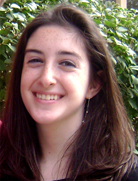 Allison Richards Allison RichardsAnn Arbor, United States Talk: C20.6 RNA-DNA Differences in Endoplasmic Reticulum Stress Response Session: C20 Basic mechanisms in genetics Date: Tuesday, June 3, 2014, 11:00 hrs. Date and city of birth: 5/3/1988, New York, United States What is your current position? I am a graduate student in my 4th year. Why did you choose a career in genetics? Genetics offers me the opportunity to study individual differences in human phenotypes. I am interested in characterizing the extent of this natural variation and taking advantage of it to determine the mechanistic basis of human diseases. What is so interesting about the research you are presenting at ESHG 2014? My research highlights the role of RNA processing, such as canonical RNA editing and other types of RNA-DNA sequence differences, in regulating cellular response to stress. | 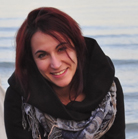 Melissa Sambrotta Melissa SambrottaLondon, United Kingdom Talk: C19.3 TJP2 deficiency: a new cholestatic liver disease Session: C19 Internal organs Date: Tuesday, June 3, 2014, 11:00 hrs. Date and city of birth: 11/16/1985, Italy What is your current position? PhD student in liver molecular genetics at King’s College London Why did you choose a career in genetics? I honestly believe that genetics is going to change the face of medicine in the next few years. The Human Genome Project was just the beginning. At the moment I am studying Mendelian diseases, which represent high penetrance variants in the genome. I have previously studied common variants which predispose to disease. I think that the variation on the human genome between these extremes is going to unravel many of the explanations of human disease in the decade. I want to contribute to this work, and really understand the role of genetics in physiology and pathophysiology. What is so interesting about the research you are presenting at ESHG 2014? The research that I’m going to present is focused on the importance of tight junction complexes in liver disease. Recently, through the application of next generation sequencing, we identified novel mutations in tight junction protein 2 involved in the aetiology of a rare Mendelian liver disorder known as progressive familial intrahepatic cholestasis, which arises in early childhood causing severe liver damage, followed by death if no liver transplantation has occurred. | |
| Thomas Schwarzmayr Neuherberg, Germany Talk: C19.1 Constitutive Activation of PRKACA in Adrenal Cushing’s Syndrome Session: C19 Internal organs Date: Tuesday, June 3, 2014, 11:00 hrs. | 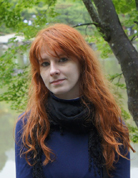 Melissa Sorosina Melissa SorosinaMilan, Italy Talk: C02.1 A novel variant in the SLC9A9 gene influences disease activity in interferon-beta treated multiple sclerosis patients Session: C02 Personalized medicine and pharmacogenomics Date: Saturday, May 31, 2014, 6:30 hrs. Date and city of birth: 11/14/1985, Bergamo, Italy What is your current position? I have recently completed my PhD at the San Raffaele Hospital in Milan where I’m continuing to work as post doc fellow. Why did you choose a career in genetics? I’ve always been fascinated by science, especially by neurology and genetics. After the master’s degree I started to work on neurological complex disorders allowing me to improve the knowledge and increase the interest on this topic. This is a highly dynamic field and a career in genetics will be full of exciting challenges. What is so interesting about the research you are presenting at ESHG 2014? I’m going to present a pharmacogenetic study including almost 1,000 multiple sclerosis patients which led us to the identification of a SNP associated with the response to interferon-beta. This finding was further corroborated with functional experiments, supporting the involvement of this variant in the interferon-beta pathways. | |
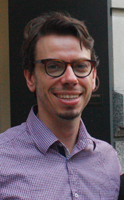 Sérgio Sousa Sérgio SousaCoimbra, Portugal Talk: C16.2 Lenz-Majewski syndrome: disturbed phosphatidylserine metabolism causes intellectual disability and a sclerosing bone dysplasia Session: C16 Genes and development 2 Date: Monday, June 2, 2014, 13:30 hrs. Date and city of birth: 12/31/1977, Coimbra, Portugal What is your current position? Medical Geneticist Why did you choose a career in genetics? Curiosity is definitely part of the reason - wanting to know why. Working in genetics and especially dysmorphology is a permanent challenge. One never knows where the story will take us and the journey is often surprising. What is so interesting about the research you are presenting at ESHG 2014? First, the phenotype – a striking, progressive and very specific pattern of malformations. Secondly, the discovery of the first human disease caused by disturbed phosphatidylserine synthesis, and part of the growing group of diseases of the phospholipid metabolism. Lastly, the characterisation of one of the few examples of conditions caused by gain-of-function mutations affecting an enzyme. |  Georgios Stamoulis Georgios StamoulisGeneva, Switzerland Talk: C20.1 Single cell allele-specific expression (ASE) in Down syndrome and common aneuploidies. Session: C20 Basic mechanisms in genetics Date: Tuesday, June 3, 2014, 11:00 hrs. Date and city of birth: 3/4/1986, Thebes, Greece What is your current position? PhD student at Stylianos Antonarakis’ laboratory in the Department of Genetic Medicine and Development, University of Geneva, Switzerland Why did you choose a career in genetics? Since I was a student at school I was always fascinated by health and life sciences, because I was intrigued by the complexity of how our body works. I decided to study Genetics and continue my career in the field by doing an MSc in Medical Genetics and now a PhD in Genetics, because I strongly believe that our genome is the book of life, which contains the answers to the all the questions related to our health and disease state. I believe genetic research will shed light in many unanswered questions and will open a new era in medicine in the near future by generating the new field of personalized medicine. What is so interesting about the research you are presenting at ESHG 2014? In this study we explore the allele specific expression (ASE) on a single cell level in Trisomy 21 (Down syndrome) and common aneuploidies for the first time, using transcriptome studies in single cells. In our study we used a pair of monozygotic twins discordant for T21 and mosaic cells from affected individuals with other common aneulopidies in order to eliminate the interindividual variability in expression profile. Through this study we aim to improve the understanding of the molecular basis of Down syndrome and other common aneuploidies. | |
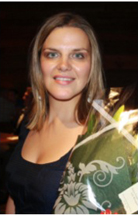 Evangelia Stergiakouli Evangelia StergiakouliBristol, United Kingdom Talk: C11.1 Polygenic risk for ADHD is associated with impaired educational achievement and lower IQ in the general population Session: C11 Statistical genetics Date: Sunday, June 1, 2014, 13:30 hrs. Date and city of birth: 5/2/1982, Larissa, Greece What is your current position? I am a postdoctoral researcher at the MRC Integrative Epidemiology Unit at the University of Bristol where I am using genetic epidemiology and statistical genetics methods to investigate genetic factors influencing complex disorders. I am especially interested in the genetics of psychiatric disorders and traits and genetic factors influencing sexually dimorphic psychiatric traits. Why did you choose a career in genetics? I decided to pursue a career in genetics when I first learnt at school that the DNA code is written using only 4 different nucleotides encoding the instructions for the development and functioning of any organism. I never cease to be fascinated by the potential of genetics to improve our health. What is so interesting about the research you are presenting at ESHG 2014? I am investigating polygenic risk scores, which are aggregates of common genetic variants associated with ADHD. My study highlights the importance of ADHD genetic scores for individuals from the general population without the disorder. Higher genetic scores for ADHD are associated with worse educational outcomes and lower IQ even when people do not have the disorder. | 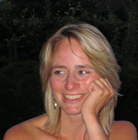 Sofie Symoens Sofie SymoensGhent, Belgium Talk: C10.5 Defects in TAPT1, involved in Axial Skeletal Patterning, Cause a Complex Lethal Recessive Disorder of Skeletal Development Session: C10 Bone and skeletal patterning Date: Sunday, June 1, 2014, 13:30 hrs. Date and city of birth: 7/29/1978, Ghent, Belgium What is your current position? Post-doctoral researcher - supervisor Connective Tissue Lab (focus on Osteogenesis imperfecta and Ehlers-Danlos syndrome) Why did you choose a career in genetics? The combination of research and clinical diagnosis is according to me a very exciting combination. Trying to find the causal underlying genetic defect of heritable (connective tissue) syndromes is very intriguing since it learns us more on general biology questions and also it helps to understand the underlying pathogenic pathways of disease. What is so interesting about the research you are presenting at ESHG 2014? Osteogenesis imperfecta is a heritable brittle bone disease with variable clinical severity. Although almost patients are genetically unraveled, a certain proportion still remains in whom no causal defect can be found. Identification of novel genetic causes not only sheds more light on the disease itself, but also reveals important processes or pathways in normal bone formation. The gene we have identified encodes TAPT1, a protein with until now unknown function. We showed that TAPT1 is important for cilium formation, thereby implying that correct cilium formation and signalling is crucial for normal embryonic bone formation. | |
 Taru Tukiainen Taru TukiainenBoston, United States Talk: PL2.5 Chromosome X-wide association analysis discovers new loci for complex traits including a height locus not dosage compensated between men and women Session: PL2 What’s new? Highlights Session Date: Saturday, May 31, 2014, 4:30:00 PM hrs. Date and city of birth: 3/10/1983, Helsinki, Finland What is your current position? Research Fellow at the Analytic and Translational Genetics Unit, Massachusetts General Hospital and the Broad Institute, Boston, USA Why did you choose a career in genetics? Genetics is a beautiful combination of biology and statistics What is so interesting about the research you are presenting at ESHG 2014? Our study emphasizes the value of including the X chromosome in large-scale genetic association studies of complex traits, which thus far have often focused only on autosomal variation. ChrX is not only a stretch of DNA but the loci that escape from X chromosome inactivation, and hence are not dosage compensated between men and women, provide another and a particularly fascinating dimension to ChrX association studies. | 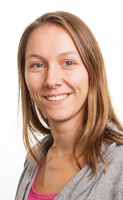 Jessica van Setten Jessica van SettenUtrecht, Netherlands Talk: C14.2 Genome of the Netherlands imputation identifies seven new loci for quantitative ECG traits in meta-analysis of 30,000 samples. Session: C14 Genetics of complex traits Date: Monday, June 2, 2014, 13:30 hrs. Date and city of birth: 1/10/1987, Heerlen, The Netherlands What is your current position? PhD student at the University Medical Center Utrecht, department of Medical Genetics Why did you choose a career in genetics? I want to understand the biological processes underlying diseases without the restriction of focusing on a specific cell or protein. Instead, working with genome-wide data provides the opportunity to test millions of variants simultaneously. I enjoy working on various traits in a field that is in constant development. What is so interesting about the research you are presenting at ESHG 2014? We meta-analyzed association results of 30,000 samples for four quantitative ECG traits and identified seven novel loci, using Genome of the Netherlands as an imputation reference panel. We show that the use of larger and more accurate imputation reference panels allow us to identify novel SNP-disease associations. | |
 Terry Vrijenhoek Terry VrijenhoekUtrecht, Netherlands Talk: C13.5 The stepping stone approach towards the Genetics Clinic of the Future Session: C13 Innovation in genetic services Date: Monday, June 2, 2014, 13:30 hrs. Date and city of birth: 6/24/1979, Delft, The Netherlands What is your current position? Faculty and Staff Advisor Why did you choose a career in genetics? The possibility to sequence anyone’s DNA at high speed and low costs puts genetics in an increasingly central position in health care. It is crucial that health care policy be adapted to this changing landscape. I hope to make a significant contribution to the genetics-based health care agenda for the future. What is so interesting about the research you are presenting at ESHG 2014? The consortium that I am representing is working towards the Genetics Clinic of the Future. We take an approach that is based on ‘radical interdisciplinarity’; we bring together disciplines that are generally wide apart to jointly identify the design principles of genome data infrastructures as genomic technologies mature and become integrated in routine diagnostic procedures and health management systems. | 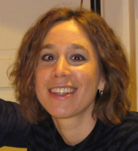 Marjolein Willemsen Marjolein WillemsenNijmegen, Netherlands Talk: C03.1 Dominant ?-catenin mutations cause a recognizable syndrome with intellectual disability, and are associated with learning deficits and structural and functional brain abnormalities in mice Session: C03 Intellectual disability Date: Saturday, May 31, 2014, 6:30 hrs. Date and city of birth: 2/28/1981, Nijmegen The Netherlands What is your current position? Clinical geneticist in training Why did you choose a career in genetics? First of all, I like the opportunity to combine and link genetic research with the care for patients and their families. It is also a pleasure to collaborate with many different disciplines in the lab and in the clinics. Furthermore, it is great to be part of the fast moving and exciting field of genetics. What is so interesting about the research you are presenting at ESHG 2014? I will present a group of patients representing a novel recognizable intellectual disability syndrome caused by dominant mutations in the gene CTNNB1. In addition I will show the results of the functional studies that we have performed in parallel in a mouse mutant, illustrating the consequences of beta-catenin dysfunction through development and into adulthood. | |
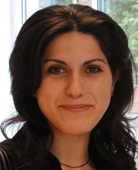 Rana Yadak Rana YadakRotterdam, Netherlands Talk: C17.3 Lentivial vector based hematopoietic stem cell gene therapy mediates sustained expression of functional thymidine phosphorylase in mitochondrial neurogastrointestinal encephalopathy mouse model Session: C17 Metabolic and mitochondrial disorders Date: Monday, June 2, 2014, 13:30 hrs. Date and city of birth: 3/23/1986, Nablus, Palestine What is your current position? PhD student Why did you choose a career in genetics? Better understanding of genes leads to better understanding of a disease leads to better treatment strategies eventually leading to a better life. What is so interesting about the research you are presenting at ESHG 2014? Mitochondrial neurogastrointestinal encephalomyopathy (MNGIE) is an autosomal recessive multisystemic disease. Different kinds of pathogenic mutations in the thymidine phosphorylase (TP) gene are responsible for the biochemical imbalances in the nucleaoside levels that leads to the alterations in the function of mitochondria in the affected tissues. Our target is to optimize a Lenti-viral vector based hematopoietic stem cell gene therapy protocol to introduce a functional copy of the human TP gene in a MNGIE mouse model, aiming for a safe and long term correction of the biochemical imbalances. | 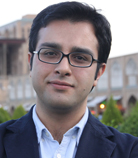 Masoud Zamani Esteki Masoud Zamani EstekiLeuven, Belgium Talk: C01.4 Whole-genome single-cell haplotyping, a generic method for preimplantation genetic diagnosis Session: C01 Prenatal testing Date: Saturday, May 31, 2014, 6:30 hrs. Date and city of birth: 8/19/1984, What is your current position? PhD student Why did you choose a career in genetics? When I was a high-school student and was introduced to the amazing laws of inheritance formulated by my hero (Mendel), I was so fascinated by the fact that simple and limited resources lead to such a discovery and established the fundamentals of Genetics, even before DNA double helix was part of equation! Later on, when I learned about the ‘chromosome theory’ by Morgan that I found the inheritance more complex. Furthermore, I realized that how solving wonderful logic problems, by these two great scientists, defined the actual inheritance. As a graduate student, I started my research in the young and fascinating field of single-cell genomics. A combination of these factors leads me to apply fundamental genetics at the single-cell level and develop novel genome screening tools. Currently, I’m interested in development and application of these for basic research, e.g. to study the genetic basis of early development in human. Importantly, I am committed to translate these genome screening tools into the clinic. What is so interesting about the research you are presenting at ESHG 2014? We developed and validated a genome-wide genome screening approach as a generic method for preimplantation genetic diagnosis. The method allows selecting for single Mendelian up to various Mendelian traits at once, as well as for a combination of ancient genetic variants conferring susceptibility to complex diseases, which are increasingly being discovered in large-scale genome-wide association studies. We anticipate single-cell haplotyping will standardize PGD practice. |
